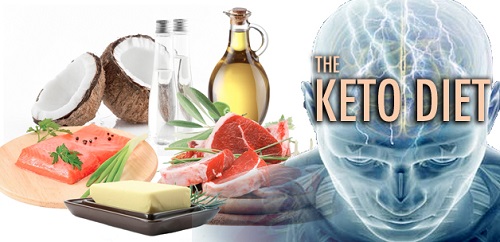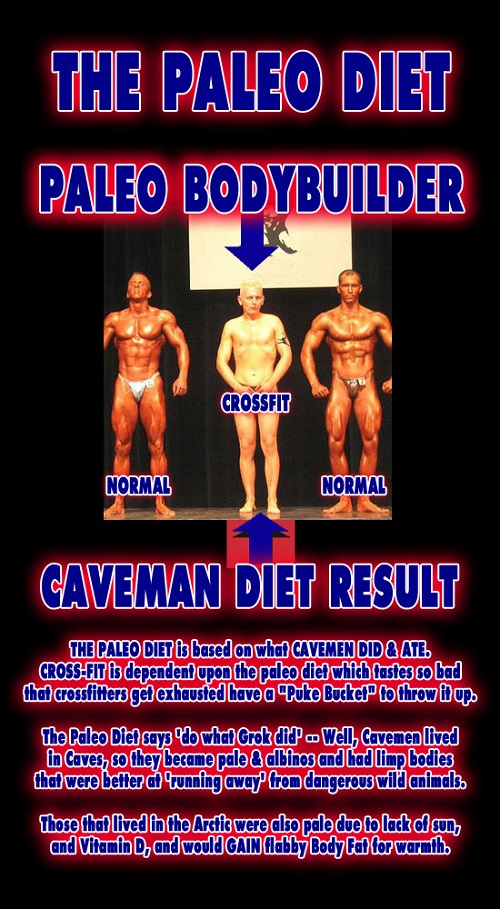Difference between Keto and Paleo
What is Keto?
Keto refers to ketogenic diet. It is a diet characterized by a very low carbohydrates, usually less than 50g per day, hight fat and moderate to low protein intake.
Ketogenic diet was introduced by Dr. R.M. Wilder at the Mayo Clinic in 1921 as a treatment for epilepsy patients.
It is since then recommended for the treatment of various diseases, such as pharmacoresistant childhood epilepsy, obesity, diabetes, and neurological diseases.
The application of a ketogenic diet induces ketosis in the body. Ketosis is the physiological state that results from the reduced carbohydrates diet.
After a few days of the diet, the reserves of glucose in the body become insufficient.
Glucose is usually the only energy source of the central nervous system, which is unable to use fat and fatty acids directly due to the blood-brain barrier.
As an alternative for the lack of glucose, the body is forced to oxidize fatty acids in the liver producing ketone bodies which include acetoacetate, β-hydroxybutyrate, and acetone. Ketone bodies are then transformed in the tissues into acetyl-coA, the alternative substrate used for the production of adenosine triphosphate (ATP), the main energy source.
What is Paleo?
Paleo refers to paleolithic diet. It is also known as the Stone Age diet, caveman diet, or hunter-gatherer diet.
Paleolithic diet consists of all foods that were available to the human being before the introduction of agriculture. It is based on the consumption of wild animals meat and uncultivated plants. This includes fish, lean meat, eggs, fruits, vegetables, roots, and nuts.
A paleolithic diet excludes all food sources that were unavailable in the paleolithic period, before the human cultivation of plants and the domestication of animals, such as grains, cultivated legumes, dairy products, salt, sugar, and processed oils.
Paleolithic diet has been shown to be beneficiary for weight loss purposes, lowering the body mass index, and waist circumference. The diet also improves blood pressure and glucose tolerance.
The studies conducted on paleolithic diet are still preliminary and small in size, therefore further research is required to prove or refute the benefits of such a diet on human metabolic diseases.
Difference between Keto and Paleo
Ketogenic and paleolithic are two popular diets with major differences:
-
Carbohydrates in Keto and Paleo
A ketogenic diet consists mainly of low carbohydrates intake, while in paleolithic diet, carbohydrates can be present in the form of roots such as potatoes, carrots, and sweet potatoes since these vegetables were not necessarily cultivated. Ketogenic diet explicitly avoids high carb root vegetables such as potatoes and carrots in order to keep a low level of glucose in the body, and promote a high production of ketones.
-
Fat and proteins in Keto and Paleo
A Paleolithic diet is based on hunting and gathering, which means it can be rich in fat when all available food is wild animals meat. That is however, not necessarily the case. When compared to a ketogenic diet, a paleo diet can consist of less fat, more proteins, and more carbohydrates.
A keto diet should primarily consist of high fat, moderate proteins, and very low carbohydrates intake. The fat consumption might originate in this case from oils (vegetable oils) or dairy products, and not necessarily from meat alone.
-
Dairy products in Keto and Paleo
A paleolithic diet explicitly prohibits the consumption of any type of food that was introduced after the emergence of agriculture and animal domestication in the human history, this includes dairy products.
A ketogenic diet, in comparison, is a high fat diet allowing the consumption of full fat dairy products such as butter, ghee, full fat cream cheese, heavy cream, and hard cheese.
-
Fruits in Keto and Paleo
Fruits contain glucose and fructose, and are therefore discouraged in a low-carbohydrate ketogenic diet, whereas a paleolithic diet is based on the consumption of picked and gathered fruits.
-
Benefits of Keto and Paleo
The beneficial effects of a ketogenic diet have been scientifically proven. A ketogenic diet is recommended for the treatment of pharmacoresistant childhood epilepsy, obesity, diabetes, and neurological diseases. Lately, studies associated to cancer research are being conducted in order to assess its effect on cancer therapy.
Paleolithic diet, on the contrary, is a popular diet, with not enough scientifically proven benefits. Weight loss, a lower body mass index, and a smaller waist circumference are some of its direct effects. However, more research and clinical studies are still needed in order to evaluate its benefits for metabolic diseases such as diabetes.
Keto versus Paleo: Comparison Table
| Ketogenic diet | Paleolithic diet |
| Low carbohydrate intake (less than 50g per day). | May contain carbohydrates in the form of non cultivated root vegetables such as potatoes, sweet potatoes, and carrots. |
| High fat diet with moderate proteins and low carbohydrates intake. | Can be higher in proteins and lower in fat than ketogenic diet. |
| High fat dairy products such as butter, ghee, full fat cream cheese, heavy cream, and hard cheese are allowed. | Explicitly prohibits the consumption of dairy products, since they were introduced after the emergence of agriculture and animal domestication. |
| Discourages the consumption of fruits since they contain glucose and fructose, the ketogenic diet being focused on keeping a low level of glucose in the body. | Gathered and picked fruits are allowed, regardless of their sugar contain. |
| Scientifically proven benefits. Recommended for the treatment of pharmacoresistant childhood epilepsy, obesity, diabetes, and neurological diseases. | Effective for weight loss, reduction of body mass index and waist circumference. However, there is still not enough scientific proof for its application in the treatment of metabolic diseases, such as diabetes. |
Summary of Keto and Paleo
Keto and paleo are two terms referring to two different types of diet, ketogenic and paleolithic diets respectively.
While they both promote a healthier lifestyle, ketogenic and paleolithic diets present major differences:
- Ketogenic diet is a low carbohydrates diet with the purpose of keeping a very low glucose level in the body, while promoting fat metabolism and the production of ketones as a new source of energy. Paleolithic diet consists in the consumption of types of food available for mankind before the establishment of agriculture. It includes wild meat and gathered vegetables and fruits.
- Ketogenic diet allows the consumption of high fat dairy products, and discourages the consumption of fruits. Paleolithic diet prohibits dairy products, and allows gathered and picked fruits.
- Ketogenic diet has proven to be medically beneficial, especially in the case of epilepsy, obesity, diabetes, or neurological diseases. More clinical research has yet to be conducted in order to prove the benefits os paleolithic diet.
- Differences Between Irreversible Enzyme Inhibitors and Reversible Enzyme Inhibitors - May 23, 2018
- Difference Between T cells and B cells - April 5, 2018
- Difference Between Primary Pollutants and Secondary Pollutants - March 17, 2018
Search DifferenceBetween.net :
Leave a Response
References :
[0]Allen, Bryan G. et al. “Ketogenic Diets as an Adjuvant Cancer Therapy: History and Potential Mechanism.” Redox Biology 2 (2014): 963–970. PMC. Web. 20 Dec. 2017.
[1]Klonoff, David C. “The Beneficial Effects of a Paleolithic Diet on Type 2 Diabetes and Other Risk Factors for Cardiovascular Disease.” Journal of Diabetes Science and Technology 3.6 (2009): 1229–1232. Print.
[2]Paoli, A et al. “Beyond Weight Loss: A Review of the Therapeutic Uses of Very-Low-Carbohydrate (ketogenic) Diets.” European Journal of Clinical Nutrition 67.8 (2013): 789–796. PMC. Web. 20 Dec. 2017.
[3]Paoli, Antonio. “Ketogenic Diet for Obesity: Friend or Foe?” International Journal of Environmental Research and Public Health 11.2 (2014): 2092–2107. PMC. Web. 20 Dec. 2017.
[4]"Image Credit: http://www.jbsa.mil/News/Photos/igphoto/2001709188/"
[5]"Image Credit: https://www.flickr.com/photos/paleo-atkins-meat-diet-info/6660182481"


